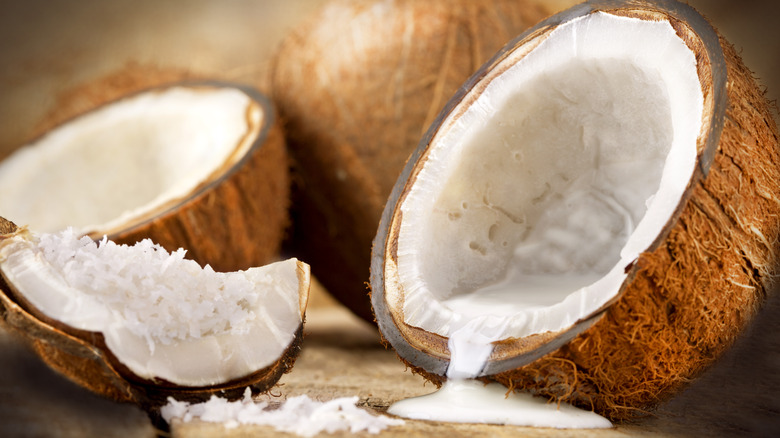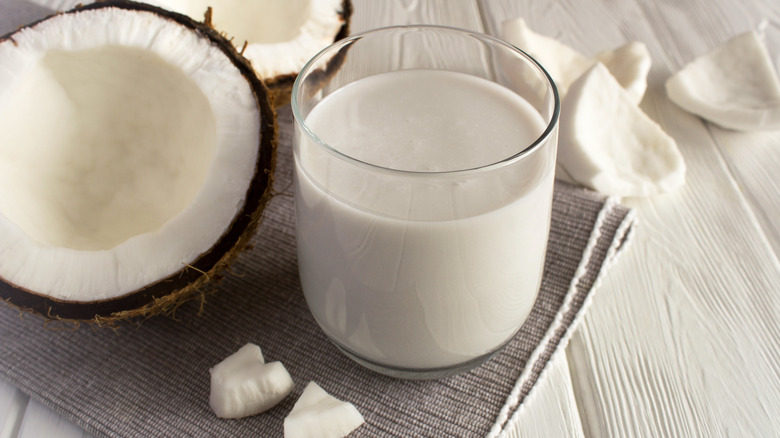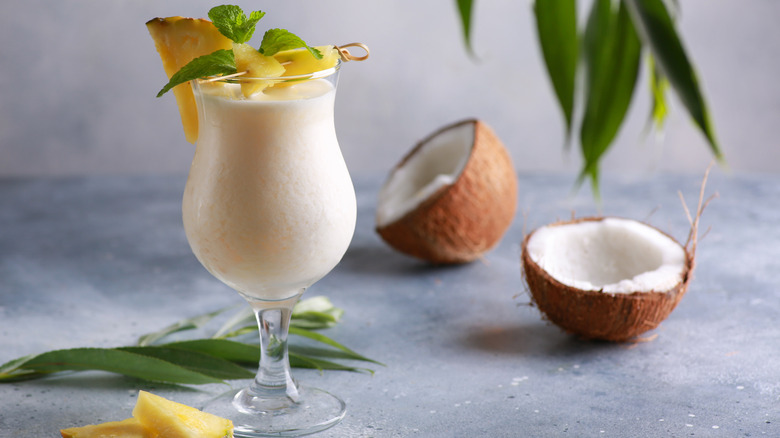What's The Difference Between Cream Of Coconut And Coconut Cream?
Coconut cream and cream of coconut, despite sounding very similar, are unique and used for different purposes. While they do share a number of similarities, including being made by mostly the same process, they can't always be used interchangeably.
Coconut cream is made by blending together coconut, water, and occasionally a stabilizing agent. This results in a product with relatively high-fat content, akin to traditional dairy cream. This inherent richness makes it an excellent candidate for culinary applications where a replacement for heavy cream is needed. On the other hand, cream of coconut follows a similar process but takes a distinct turn by incorporating copious amounts of sugar. This transformation yields a thick, syrupy concoction with a pronounced sweetness.
In terms of texture and taste, the cream of coconut diverges from coconut cream. Its viscosity and saccharine profile set it apart, making it a standout ingredient in sweet treats and tropical cocktails. When considering a substitution between these two, it's crucial to factor in both the level of sweetness and the texture they bring to the table. Your choice should be guided by the desired end result of your recipe. Whether you're seeking a luscious, creamy addition or a sugary, dense infusion, understanding these nuances will help you to make the right culinary decision.
How does coconut milk fit in?
So, where does coconut milk fit into all of this? Coconut milk is made in much the same way as coconut cream, though similarly to how dairy cream and milk differ, coconut milk has a lower fat content than coconut cream. Coconut milk is made by blending coconut flesh with water; often, it's used as a non-dairy substitute for other types of milk, but its distinct coconut flavor makes it uniquely suited to particular types of dishes, such as curries and desserts.
Coconut milk has become a popular ingredient for everything from soups and stews to pouring directly into morning coffee. Just note: The coconut milk you get in a can and the one in a carton differ. Coconut milk in the carton is diluted down to be ready for drinking; canned coconut milk is much thicker and higher in fat and is ideal for culinary applications such as baking.
When to use which coconut product
While it can get confusing to tell between each of these coconut products, each one has its own unique place in the kitchen. Learning when to use which will help your coconut-infused culinary endeavors succeed every time.
Cream of coconut, ideally, goes in desserts and sweet beverages such as piña coladas. Its purpose is primarily a cocktail ingredient; in the grocery store, you'll find it with the other mixers. However, it isn't just for cocktails — you can also use it in smoothies and mixed into sweets like sticky rice.
Coconut cream, on the other hand, is ideal in curries and other dishes that need a thick texture. You can also use this ingredient to make coconut cream pie.
Coconut milk can also be used in curry, as well as to thicken up soups, as a base for sauces, and as a milk substitute in desserts and coffee beverages. Just be sure to remember the differences between canned coconut milk and the version that comes in a carton.


